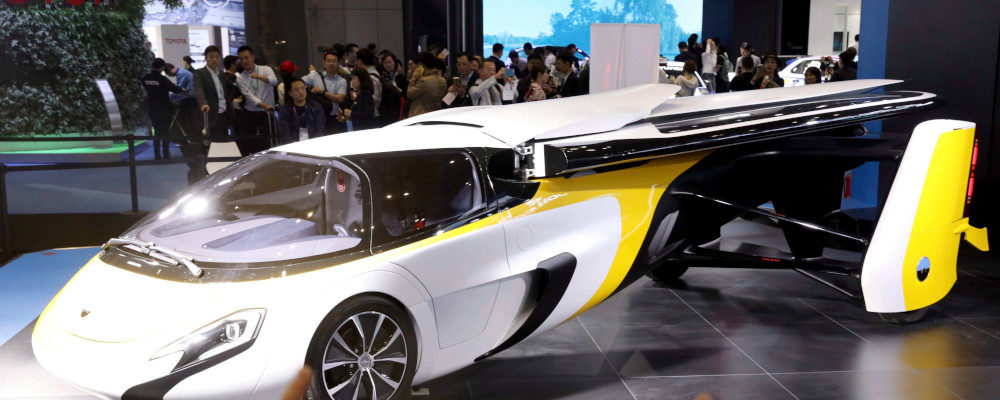My wife and I have been watching The Americans recently. It’s set in the early 1980s and tells the story of two Soviet KGB intelligence officers posing as an American married couple living in a suburb of Washington, DC.
The Cold War politics feel pretty distant but the setting is very familiar. I have to remind myself when watching it that 1980 was forty years ago. It’s as far removed from today as it is from 1940.
The world changed a lot between 1940 and 1980. Has it changed that much since then?
There are of course fewer screens in The Americans than there are today. No smartphones and no tablets, though there are many TVs. But the rooms, the houses, the offices, the restaurants all look and feel largely the same.
The planes are the same. The trains are the same.
I’m not making an original observation here, of course. Many people much smarter than me, including Peter Thiel, Tyler Cowen, Robert Gordon, and Patrick Collison have pointed to the stagnation apparent in the physical world over the past 50 or so years.
More recently, so has J. Storrs Hall.
In his latest book, Where Is My Flying Car?, he asks, well: where is my flying car?
This question acts as a focal point for a broader discussion around the nature and causes of our technological stagnation. Here’s how he frames it, citing world health economist Hans Rosling:
“[We can] classify the wealthiness of the world’s population into four levels:
- Barefoot. Unable even to afford shoes, they must walk everywhere they go. Income $1 per day. One billion people are at Level 1.
- Bicycle (and shoes). The $4 per day they make doesn’t sound like much to you and me but is a huge step up from Level 1. There are three billion people at level 2.
- The two billion people at Level 3 make $16 a day; a motorbike is within their reach.
- At $64 per day, the one billion people at Level 4 own a car.
The miracle of the Industrial Revolution is now easily stated. In 1800, 85 percent of the world’s population was at Level 1. Today, only 9 percent is. Over the past half century, the bulk of humanity moved up out of Level 1 to erase the rich-poor gap and make the world wealth distribution roughly bell-shaped. The average American moved from Level 2 in 1800, to level 3 in 1900, to level 4 in 2000. We can state the Great Stagnation story nearly as simply: There is no level 5.”
In fact, the average income of unattached individuals (never mind families) in the United States tipped into Level 4 territory just around 1980.
We were at Level 4 in the time of The Americans and we’re at Level 4 today, forty years later.
At a first approximation, our stagnation has been caused by a flatlining of a trend that saw energy consumption per capita increase by 2 percent every year since the advent of the Newcomen and Savery steam engines in the early 1700s.
This flatlining began sometime around 1970.
In his book, J. Storrs Hall plots all technological predictions from the 1950s and 1960s era science fiction against their energy requirements and the percentage to which they’ve been fulfilled.
We’ve made a lot of progress on those predictions that consume low amounts of energy, like pocket telephones and home-based videophones, and much less progress on those predictions that consume high amounts of energy, like a lunar base, interplanetary travel, and of course, flying cars.
We’ve also made very little progress on those predictions relating to energy production and storage specifically, like fusion power and atomic batteries.
This all begs the question: why did energy production and consumption flatline in the 1970s?
The short answer is government intervention and regulation.
A lot happened in the 1970s as it relates to energy production and consumption, including Nixon’s price controls which set a ceiling on the price of oil in 1971, the OPEC oil embargo in 1973, and the creation of the Department of Energy in 1977.
There was also the introduction of the Nuclear Regulatory Commission (NRC), which was established in 1974 and began operations in 1975.
Since then, not a single new nuclear reactor has come online as part of a new nuclear plant in the U.S. (though the NRC has approved a handful of new reactors at existing plants).
We’re now left with what can only be described as a great stagnation in energy production and therefore consumption as a first-order effect of the increased bureaucratization and regulation of the physical world, and stagnation in technological progress more broadly as a second-order effect.
So, how do we get out of this predicament and kickstart a return to the future?
It’s instructive to look to where the advance of nuclear power was not halted: the U.S. Navy. As J. Storrs Hall recounts:
“Former Navy Secretary John Lehman wrote, ‘The reason for Navy nuclear success is because there has always been one strong experienced person in charge and accountable, standing like a stone wall against the bureaucratic onslaught.’ The Navy has over 6,000 reactor-years of accident-free operation. It has built 526 reactor cores (for comparison, there are 99 civilian power reactors in the U.S.), with 86 nuclear-powered vessels in current use.”
This should be a lesson to our political leaders and the bureaucracies they (in theory) control.
Increased bureaucratization and regulation benefits from the sort of increased transparency and veto points that were introduced with a broader agenda of progressive reforms in the 1970s. These reforms were intended to mitigate against any risk of corruption and abuse of power, and have had the added effect of disempowering individual bureaucrats just as the power of bureaucracy as a whole has risen exponentially.
We’ve rid ourselves of strong experienced individuals in charge and accountable and who are able to stand like a stone wall against the bureaucratic onslaught.
And so the onslaught has continued.
Change requires changemakers, be they politicians, bureaucrats, and entrepreneurs. We’re going to need more of all three if we’re going to build the optimistic future of 1950s and 1960s science fiction.
J. Storrs Hall reminds us of our future lost, of what could have been, and urges us to not accept our current stagnation as necessarily given. The future could be radically different from the present, as it once was.




